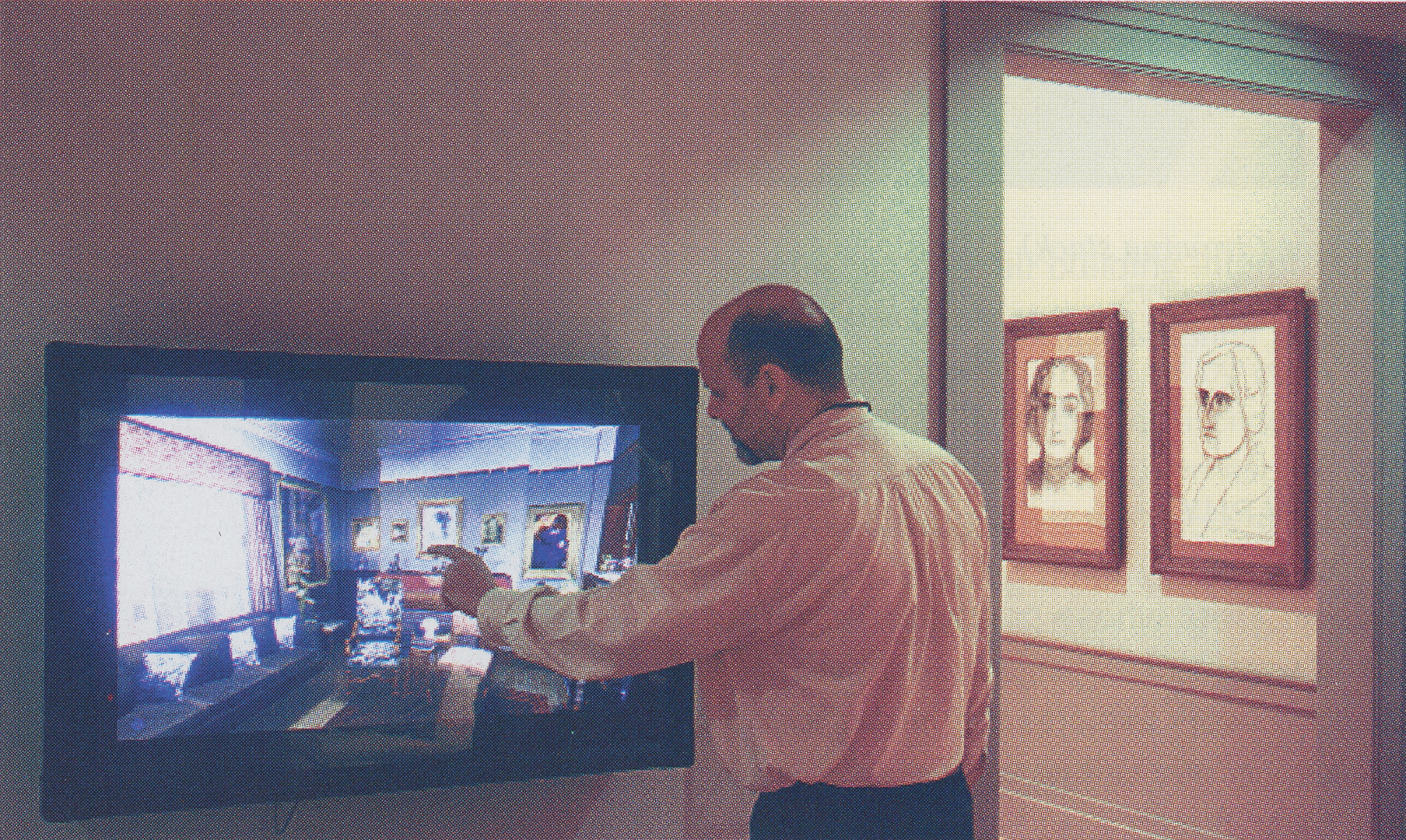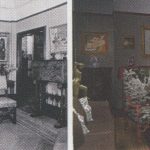Dan Bailey, Alan Price: Cone Apartments
Artist(s):
Title:
- Cone Apartments
Exhibition:
Creation Year:
- 2002
Category:
Keywords:
Artist Statement:
Etta and Claribel Cone were two sisters who over a period of 30 years amassed one of the world’s most acclaimed collections of early 20th-century French art. The Cone Collection, with its incomparable holdings of work by Henri Matisse, and major examples of Picasso, Cezanne, van Gogh, and Renoir, was donated to the Baltimore Museum of Art, along with most of the sisters’ possessions and furniture in 1950. During their lives, however, the Cone sisters lived with, and displayed the art in their apartments. They were passionate about collecting and their apartments were full of items.
In November of 2000, the Imaging Research Center was approached by curators at the Baltimore Museum of Art in Baltimore, Maryland, with the challenge of augmenting the exhibition of these historically important Impressionist paintings and to complement the existing exhibition without detracting from the meaning and beauty of the original art. IRC directors Dan Bailey and Alan Price proposed that digital media be used to provide a historical context for the artworks, which would be impossible to replicate in a physical space. Using numerous historical photographs of the sisters’ residence as a guide, the apartments would be virtually reconstructed so as to let museum viewers see the work as the Cone sisters did.
Process Information:
The impetus for this project was a series of 37 photographs of the Cone sisters’ apartments from the 1930s. These photos have interested scholars by recording how the Cone sisters lived with, curated, and displayed their remarkable collection. The photographs became the prime resource and motivation for reconstructing the apartments, but more information was required to depict the apartments photo-realistically.
The apartment building was still in existence, but all evidence of how the original apartments were laid out was gone because of major renovations in the 1970s. Ultimately, blueprints from 1910 of the original building were located and these along with measurements of the building’s exteriors provided a floor plan. Living relatives of the Cone sisters who had visited the apartments were interviewed and this provided more information. Fortunately, the Cone sisters bequeathed to the museum most of their possessions along with the artwork and this provided the ability to measure each piece of furniture as well as photograph it for
texture maps.
Management of all this data (paintings, sculptures, rooms, windows, curtains, rugs, furniture) to allow staff and students to efficiently access it became a major effort of the project. Ultimately, a Web-based mapping system was established that located all items in a room (as determined from the photographs). This system also assured that items were correctly located and cataloged. The map provided a means for locating and accessing all the original photographs from their original vantage points.
The bulk of the work consisted of modeling the apartments and the furniture. In all, more than 500 objects were accurately modeled and textured in addition to the architecture and neighborhood. The database provided modelers with measurements, reference photos, and texture maps. Each room was then arranged with all the objects and checked for accuracy by the Baltimore Museum of Art curators and project directors.
Approximately 15,000 polygons make up each room and with a total of 14 rooms, the amount of data that had to be processed by the computer to enable real-time rendering had the potential to overload the processing capabilities of the computer. To remedy this problem, a technique was employed of hiding the virtual rooms from the viewer
when they were not within the viewer’s “line of site” and then revealing them on an as-needed basis.
Upon completion of modeling, rooms were exported to the real-time interactive animation authoring program, Virtools, which provided a robust rendering engine that could handle the size and scope of the project. This program also provided the means for interface design, interaction with objects, camera movement, navigation, and support of sound and text. Evaluation and beta testing of the first version of the project was done on-site at the Baltimore Museum of Art using museum visitors.
A second version was developed to give viewers at the museum a more complete immersive experience and was installed at the museum for two weeks in April, 2001.
Driven by a network of PCs, the apartments were presented on a 16′ wide by 8′ high rear projection screen using passive stereoscopic vision and polarized glasses. Gallery visitors navigated through the apartments by using a joystick.
The piece has worked successfully at the museum for over a year and has proven to be a highlight of a visitor’s experience.
Affiliation Where Artwork Was Created:
- University of Maryland
Other Information:
Images:
1: Original photograph of Etta’s living room (circa 1930) compared to a screen grab from the virtual reconstruction.
2: IRC staff from left to right: Brinton Jaecks, Alan Price, Christian Valiente, Sala Wong, Ethan Berner, Dan Bailey. Photo by Mike Morgan.
3: Web-based floorplan for data mangement of the project.








